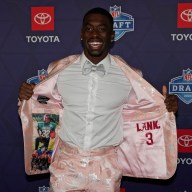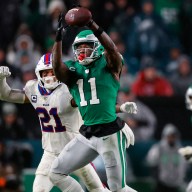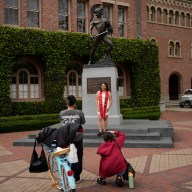A lot has happened to Toronto’s Born Ruffians in the two years since they dropped their debut album, but Luke Lalonde refuses to compare his band’s communication breakdown to the one Metallica famously documented in its film Some Kind of Monster.
“The fact that they would go to a therapist and couldn’t just work things out, that s— is hilarious,” the singer/guitarist says with laughter. “Their issues were bulls—! We just talked to each other. It just helped for someone to say what the problems were. It was nice to talk about everything.”
After drummer Steve Hamelin gave up on touring with the band, Lalonde and bassist Mitch Derosier were left to rebuild. Hamelin stayed on to record, but was replaced by Ahmed Gallab for a Franz Ferdinand tour, which also saw the addition of now full-time multi-instrumentalist Andy Lloyd.
“We said, ‘Let’s finish this and keep our sound as a band. Then play it by ear,’” explains Lalonde. “After we finished recording, Steve told us he wanted to give it another try. The timing was perfect because Ahmed was moving on to work with Yeasayer and we needed to find another drummer.”
The title of the sprightly indie rockers’ new album Say It is a reference to their new philosophy to speak their minds. “A lot of the air had been cleared of those things that built up over time but were really nothing,” Lalonde admits. “Things were just a little more chilled out, which was really reflected in the songwriting.”
Say It isn’t just more chilled, it’s also a giant mature leap from the youthful exuberance of 2008’s Red Yellow and Blue. The band has ripened and stripped down their arrangements, losing the vigorous, trademark group chants and those blatant left turns that were often a “make or break” scenario for listeners.
“We used to do that intentionally,” Lalonde says of their spontaneous melodic disruptions. “We wanted to subvert the obvious and make people perk up. This record we actually said out loud, ‘Let’s do what feels like the pop thing to do.’ Ultimately that’s more fun. But I’m learning that maybe we’re doomed to become that kind of FM radio band.”
Part of the fun included Lalonde giving Say It some sax appeal. “It’s only prominent on one song, and we scaled the others back as more of a textural thing. Initially I wanted — I’m not joking — a straight-up, rock sax solo. It never worked out. I think it would have been on the wrong side of good taste.”
















